How to properly and quickly wash the dishes?
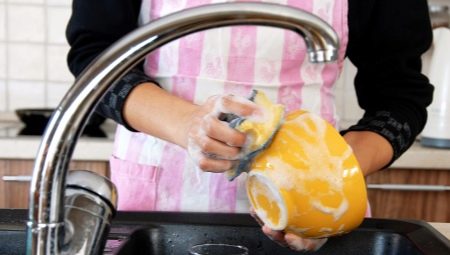
By tradition, the guest is always invited to a table or at least for tea. And how unpleasant it can be that this very tea is poured into a cup with a tea bloom. After such a visit, guests' first desire is to check their dishes at home and make sure everything is clean and shiny.
How to properly and quickly wash the dishes, preserve their beauty and get rid of grease, plaque and scale?

Where to begin?
The answer to this question depends on several factors:
- whether you have a big family and how often do you have to wash the dishes;
- how dishwashing detergents act on the skin;
- what means are used more often: folk or industrial;
- are there a lot of greasy dishes;
- whether you have to wash bottles (for example, baby bottles).
For a large family, the dishwasher will be a lifesaver. But even without it, most of the population still manage and cope. To do this, you just need to stock up on dishware, hand protection and a little patience.
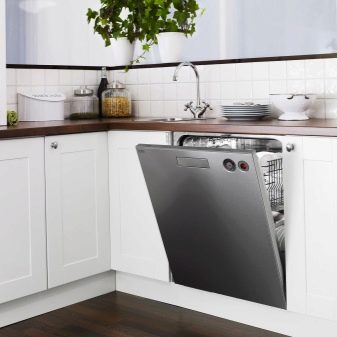
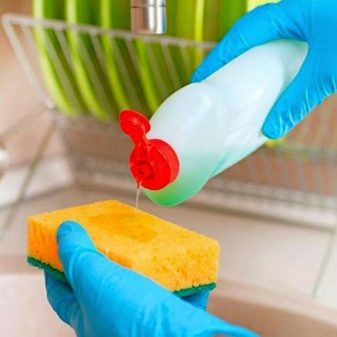
In addition to gloves and an apron, you should stock up on various sponges, brushes, brushes, washcloths with metal threads. Depending on your preferences, you will need liquid and dry detergents for all kinds of dishes to remove plaque, fat, and burnt food. Some types of dishes can and should be washed with cold water, but it is still difficult to do without hot water. In the absence of running water, you will need a basin or dish. In nature, this role is usually played by a bucket.
When choosing any method of washing, you need to remember that the dishes must be rinsed from all chemicals under running water for at least 15 seconds.
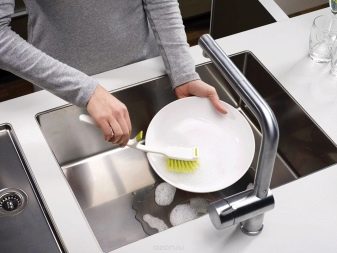
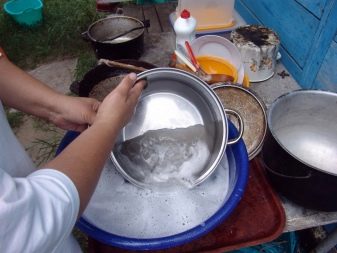
You should also observe the following rules:
- Before washing dishes, remove all food debris so as not to clog the sink.
- Don't forget about sorting and ordering dirty items.
- Every crockery has two sides, an inner and an outer, and both need washing.
- It is much easier to clean oily utensils after soaking.
- Drying is carried out in one of two ways: natural drying upside down or drying with a towel.
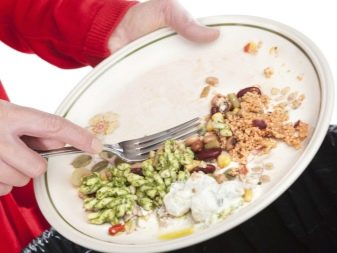
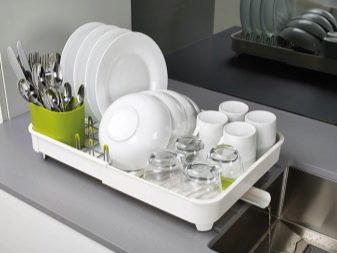
Choosing funds
Modern industry offers a large number of detergents and cleaning products. When choosing, do not forget that:
- high price is not a guarantee of quality, but a means of paying for advertising;
- a large number of components increases the risk of an allergic reaction to the product;
- a strong smell of flavoring can hide the chemical smell of substandard components;
- bright fluorescent (acidic) colors of liquid detergents are the result of the use of a large number of dyes, to which allergy sufferers can react negatively.
So, a clear, odorless gel is a good choice for those who care about their health. And who does not want to risk it at all, can choose folk remedies.
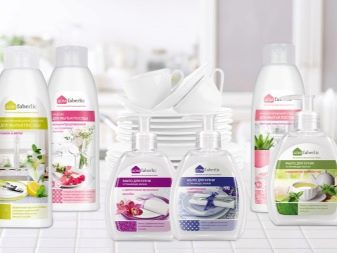

There are many popular ways to clean dishes. Let's list some:
- Dry mustard can be used undissolved as an abrasive. The surface is rubbed with it and left for 10 minutes, after which it is washed off with running water. Mustard can also be diluted in water and soaked dishes in it. Dried food can be removed perfectly this way.
- Baking soda is used in a similar way. It can scratch the surface, but it copes well with burnt food, stubborn stains, tea and coffee bloom, yellowness on enameled pots, dark spots on cutlery. And baking soda also removes unpleasant odors from any dishes. To do this, it must be dipped in a soda solution (1 tablespoon per 1 liter of water).
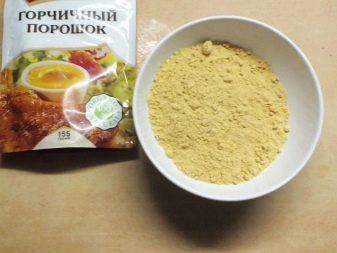
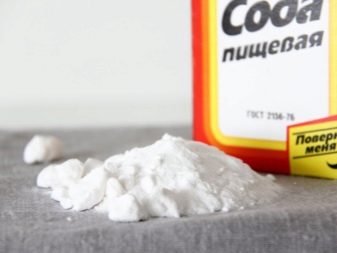
- Soda ash is a stronger remedy. You need to work with it with gloves, use it in the form of a solution or paste.
- Table vinegar (not essence) perfectly degreases surfaces, fights scale, whitens light-colored dishes and kills germs. For use, you need to dilute 2 tbsp. tablespoons of vinegar in 1 liter of water, and, wetting a sponge in a solution, wash the dishes. It also removes odors from kitchen items. And pouring the agent into the pan and leaving it for several hours, you can clean the utensils from carbon deposits.
- Laundry soap contains alkali, thanks to which it perfectly disinfects and copes with any dirt. You need to use a classic brown soap with an unpleasant odor.
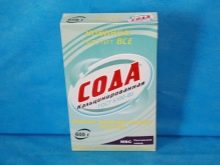


- The ammonia smell is too strong. But those who are not afraid of this can clean old stains on dishes and other kitchen surfaces with a few drops.
- Citric acid will cleanse, whiten, disinfect, remove scale and remove unpleasant odors. 5 g of citric acid, diluted in 1 liter of water, will help clean up household utensils.
- Wood ash is a rare component today. But it is she who is best of all to clean the dishes in the country, in nature, on a hike. Leftovers from the fire will do a great job with the grease in the kettle and the sooty bucket.
- Edible salt is an abrasive available to everyone. Fry a pan with solidified fat or burnt-on should be covered with a centimeter layer of salt and a little bit filled with water. Leave the container overnight, then boil. This method cannot be applied to Teflon coatings.
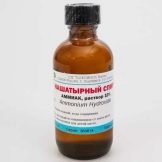
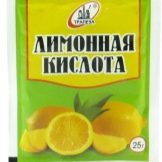

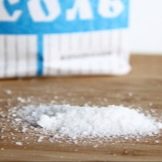
- River sand, as well as ash, will help clean dishes in nature. But even at home, this abrasive will brilliantly clean aluminum pots and cast-iron pans.
- Stationery glue can also be used to clean stale dirt on dishes. To do this, in a large saucepan with boiling water, pour shavings of one bar of laundry 72% soap, ½ cup of clerical (silicate) glue, ½ cup of soda ash. Reduce boiling water, dip pots, pans into it, boil for 2 - 5 hours.The smell of the composition cannot be called pleasant, so you need to work with the hood turned on or with an open window. You need to periodically add water to the pan so that the dishes are covered with water. When the water darkens, and the carbon deposits from the frying pan or saucepan have moved away, the dishes are removed from the container and they begin to clean with a scraper, knife or aluminum sponge.
- The paraffin that gets on the dishes from the candles, first of all, must be scraped off as much as possible. The residues are heated with a hairdryer and removed with a paper towel or towel. In another case, a dish in paraffin is placed in a large container on a fire, a detergent (preferably soda ash) is added and brought to a boil. Dissolving, the paraffin remains in the water. It remains to wash the dishes under running hot water.

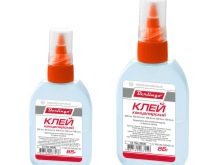
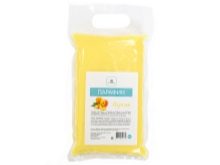
Sorting rules
Regardless of the method of washing, the dishes are pre-sorted. The fattest should be separated from the fat-free, glasses - from plates, pots - from cups and cutlery. Such sorting will significantly speed up the work, because it is easier to arrange the washed dishes, and muscle memory will more quickly remember what, why, and where to put it. Therefore, it is easier to wash the dishes, starting with spoons - forks, continuing with glasses and cups, catching up with saucers, plates and dishes and ending with pots, saucepans and baking sheets.
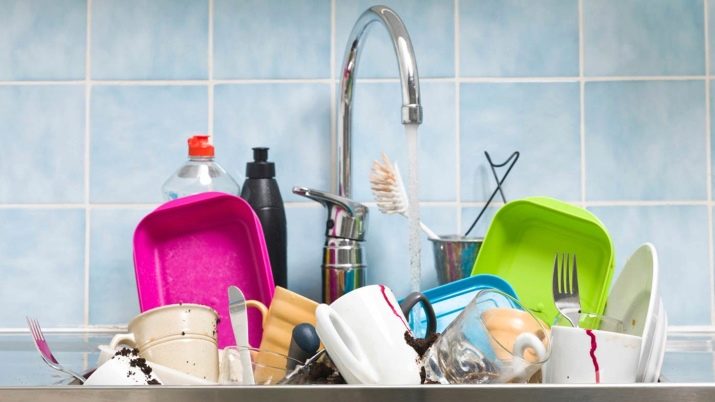
We take into account the type of material
Indeed, not every type of dish can be washed with the same product. Otherwise, the pots may darken and the gilding may peel off.
Glass
To wash glassware, follow these tips:
- Hot salted water is good for glassware. After washing it must be rinsed under cold water.
- Lemon peel or a few drops of lemon juice added to the wash water will add shine to glass items.
- Instead of lemon for shine, you can add small pieces of raw potatoes to the water.
- Glass objects can be cleaned with fine-grained grits or salt: pour into a decanter or vase (bottle), add a little water and shake thoroughly. This method of cleaning will help out in the absence of a bottle brush.
- The water in which the potatoes were cooked will perfectly clean glass, earthenware and earthenware dishes.
But glassware requires special drying: clear glass must be thoroughly wiped with a lint-free cloth, such as a waffle towel.
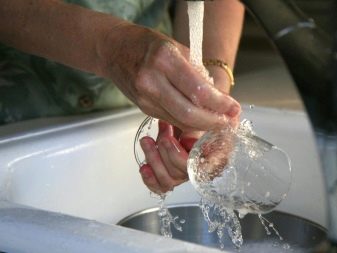
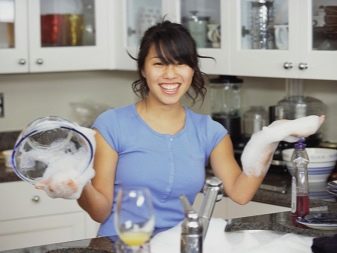
New glasses, wine glasses, glass plates are tempered by boiling to give them strength. Pour clean river sand 1 cm thick into a saucepan, add cold water, bring to a boil and boil for 15 minutes. Then add 2-3 tbsp. l. salt and simmer for another 30 minutes. Cool the water, then remove the dishes and rinse thoroughly.
Metal
Among household utensils there is a wide variety of metals: cast iron and silver, gold and cupronickel, stainless steel and enamelled steel, copper and aluminum. In order not to spoil it, you must consider the following:
- Do not use abrasive products, hard sponges or metal scouring pads for washing stainless steel dishes, polished aluminum, otherwise the coating will be scratched.
- Cutlery made of silver and cupronickel, after use, is dipped in boiling water, adding a little baking soda there.
- To clean the enamel pan from the yellow plaque inside, you need to pour water into it and add table salt at the rate of 5-6 tbsp. spoons per 1 liter of water. The solution can be left for several hours or boiled for 40 minutes.
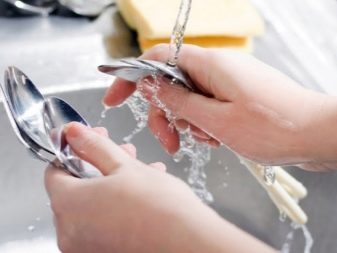

- A red-hot enamel pot should not be immediately placed in cold water - the enamel will crack.
- Rub the metal utensils with raw potato wedges to make them shine.
- Copper utensils can be easily scrubbed with a lemon half sprinkled with salt. Rub the copper thoroughly with lemon, rinse and dry with a soft cloth.
- To prevent white spots from appearing on the stainless steel pan, you should not add salt to cold water. Only hot, while stirring. To get rid of white spots, you can also rub the bottom of the pot with half a lemon.
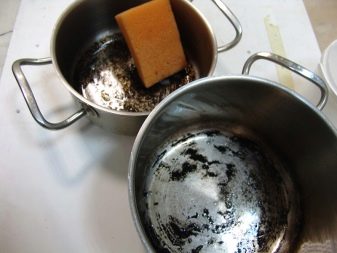
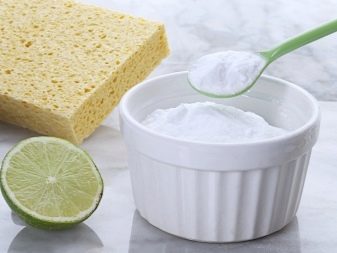
Plastic
Over time, unpleasant plaque and odor develops on plastic dishes. You can get rid of them with the help of soda: dilute the soda with water, and rub the plastic abundantly with this gruel, rinse off after 24 hours.
Coffee grounds, applied to the dishes for 3-4 hours, will relieve them of odors, and a bag of vanillin (not sugar) is diluted in warm water poured into a container. The container is closed with a lid, shaken for several seconds and left for 2-3 hours, after which the container is rinsed.
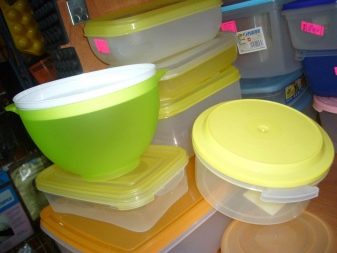

Porcelain
Porcelain and earthenware dishes must not be washed with abrasive substances. Besides, she doesn't like temperature changes: wash and rinse with water of the same temperature. You can save porcelain from darkening with a mixture of baking soda and vinegar or rubbing with baking soda. Plaque from tea is also removed with soda or ammonia solution.
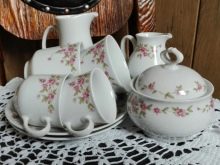
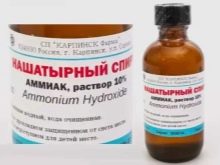
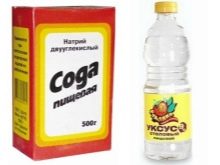
With gilding
Gilded dishes should not be washed in the dishwasher. It is washed in the sink with liquid products. Black teaspoons can be cleaned with baking soda. And the shine of gilding is returned with the help egg whitesused to rub the dishes with a flannel napkin.
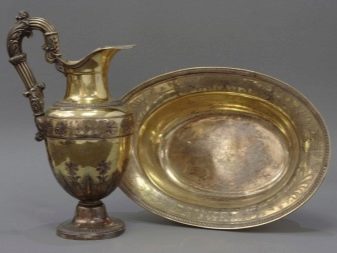
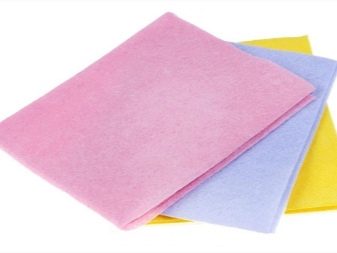
Remove fat
Above, there have already been several ways to get rid of cooking utensil fat at home. Let's name a few more:
- Dilute 100 g of baking soda with hydrogen peroxide to a pasty composition. Grate the dishes with gruel and leave for a while. This method will not only help to wash the utensils from old fat, but also disinfect them.
- Soda and vinegar (1: 1) quickly break down fat and after 10-15 minutes. washed off dishes without streaks. For too heavy soiling, the procedure can be extended.
- Hot water is poured into a cast iron pan so that the bottom is completely covered. Put the container on fire and add 2 tbsp. tablespoons of salt. After boiling, add the same amount of soda and boil for another 15-20 minutes. After the water has cooled down, the surface is cleaned and rinsed.
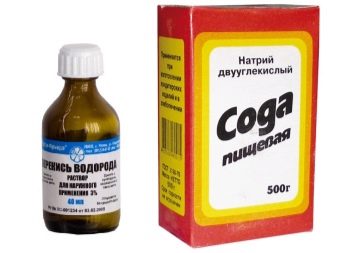

Baby accessories
In order not to provoke the development of allergies in a child, it is recommended to use soda, salt, mustard powder instead of chemicals. If possible, boil the dishes. If this cannot be done, hydrogen peroxide or soda. The main thing is to rinse it thoroughly after washing.

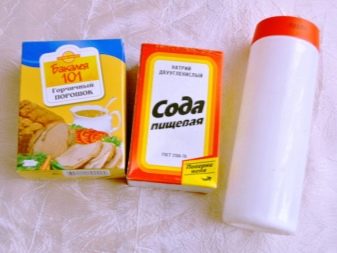
Useful Tips
Recommendations for hostesses:
- A vinegar solution will help get rid of the smell of onions or fish.
- You can wash the frozen caramel with soda water.
- To prevent rust from forming on metal products, the dishes must be thoroughly dried.
- To remove sediment from a vase, you need to pour water with acetic acid into it (for 1 liter of water, 1 tsp. Acid).
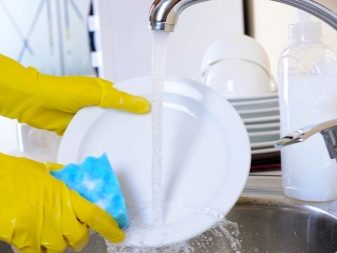

- Wooden utensils will retain their natural color for a long time if they are dipped in cold water before use.
- Crystal dishes are washed with mustard, rinsing with a weak vinegar solution.
- Laundry soap washes away fat even in cold water.
- A soda solution poured into a vessel for several hours will help clean the teapot from plaque.
For information on how to properly and safely wash the dishes without using the dishwasher, see the next video.








